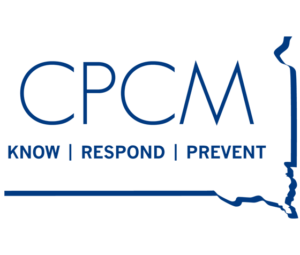About Us
Our Mission
CPCM is committed to ending child maltreatment in South Dakota by empowering professionals, communities, and the public to know about, respond to, and prevent child abuse and neglect in South Dakota.
About Us
The Center for the Prevention of Child Maltreatment (CPCM) is developing sustainable solutions to reduce all forms of child maltreatment in South Dakota, beginning with child sexual abuse.
Child maltreatment prevention and response is a complex issue. Responsibility for prevention efforts and corresponding promotion of child wellbeing is shared across multiple agencies and programs in the child welfare system. CPCM brings unity to the work. The three pillars of our work are:
- Know: Understanding South Dakota’s child maltreatment landscape using state and local data, while also integrating the latest national research, evidence-based practices, and innovations to guide prevention and response strategies.
- Respond: Putting knowledge into action by implementing evidence-informed strategies tailored to South Dakota’s landscape, such as developing and delivering specialized training, convening interdisciplinary teams, advising policy and legislative changes, raising public awareness, and providing comprehensive education and resources to prevent and address child maltreatment.
- Prevent: Implementing tailored, evidence-based strategies that proactively reduce child maltreatment rates, prevent future harm, and improve outcomes for all South Dakota children and families. Data from these prevention efforts continually informs our knowledge base, driving an ongoing cycle of responsive action.
Established by the South Dakota Legislature in 2017, CPCM aims to align local, tribal, state and federal efforts to protect children. CPCM’s work product revolves around the CDC Adverse Childhood Experiences prevention strategies. The activities performed by the CPCM partners advance better coordination of programs across systems to take full advantage of the use of available resources statewide.
CPCM is operated by a staff of ten and is housed within the School of Health Sciences at the University of South Dakota. The CPCM Advisory Board is made up of community leaders, policy makers, survivors, and advocates.

